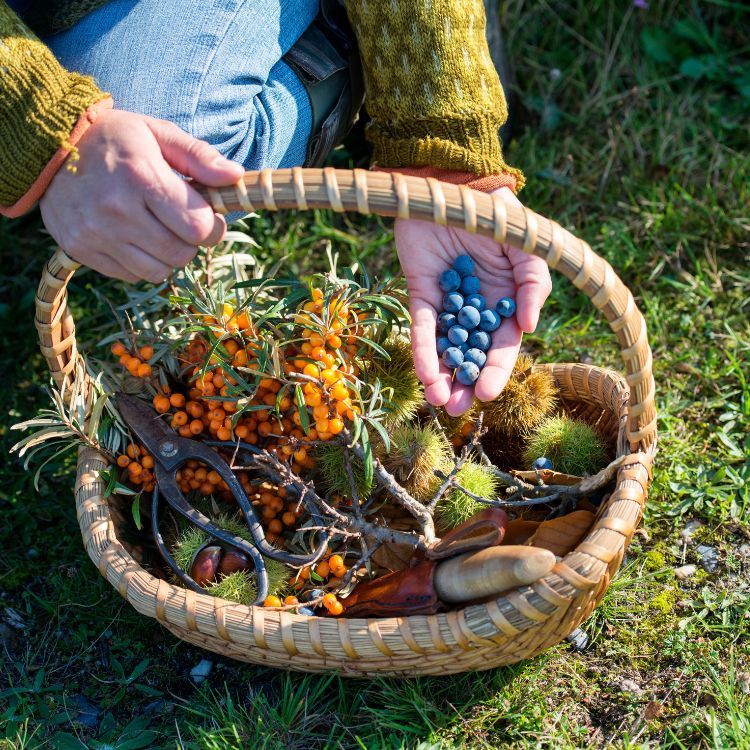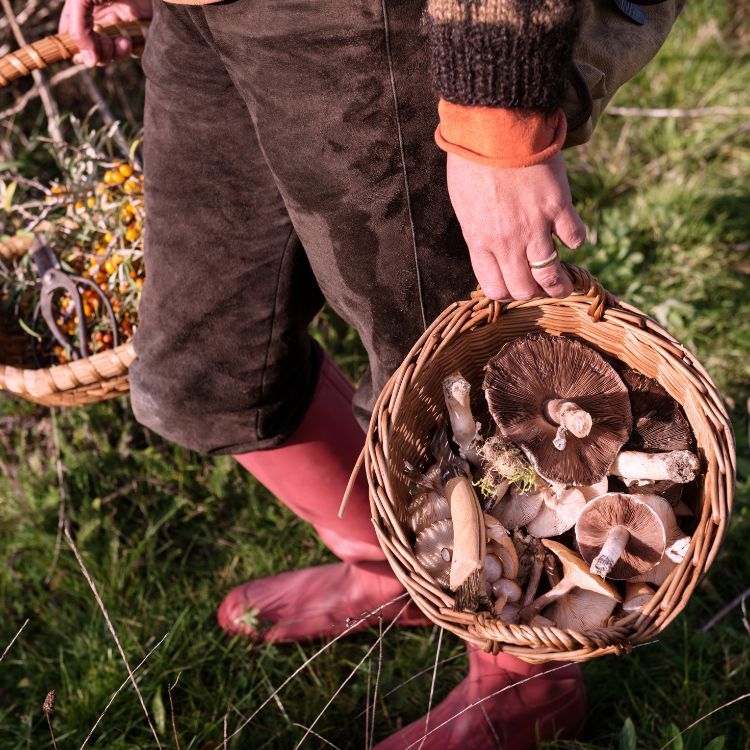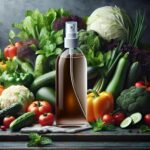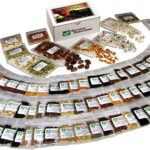
Key Takeaways
Foraging can add diversity and nutrition to your diet during emergencies.
Identifying and growing wild edibles enhances food security and self-sufficiency.
Seasonal knowledge is key to a successful foraged food garden.
Community sharing of foraging skills can strengthen local resilience.
Foraged foods should be integrated safely and legally into your gardening practices.
Turning Your Green Space Into a Lifeline
Imagine looking out at your garden not just as a space for leisure, but as a lifeline. In times of scarcity, your backyard can become a source of sustenance. It’s not just about the usual veggies you plant every year; it’s about the wild, naturally occurring foods that can bolster your food supply. We’re talking about foraged foods – those that grow without any human intervention, which are often overlooked yet are nutritional powerhouses.
Now, you might be wondering, “How do I start?” Well, that’s exactly what we’re diving into. I’m going to show you how to transform your garden into a survival garden with foraged foods. This isn’t just about survivalism; it’s about embracing a sustainable lifestyle that could be a game-changer for you and your family.
Enhancing Self-Sufficiency with Nutritious Foraged Foods
You’ve probably heard of foraging – it’s like a treasure hunt for adults, but with delicious and nutritious rewards. Foraged foods can be anything from wild berries to edible greens and mushrooms. They’re often packed with vitamins and minerals, making them a fantastic addition to your diet. And guess what? Many of these plants could be growing in your garden right now, unnoticed and unused.
But why should you care? Because self-sufficiency is empowering. When you can identify and harvest food from your environment, you’re less reliant on grocery stores and more prepared for any situation. Plus, foraged foods can introduce new flavors and textures to your meals, making eating an adventure.
The Art of Survival Foraging
Foraging is an art, and like any art, it requires skill and knowledge. The first step is learning what’s edible and what’s not. This is crucial because some plants can be harmful or even deadly. But don’t let that scare you – with the right resources and a bit of practice, you’ll be spotting edible plants with the confidence of a seasoned forager.
Here’s what you need to start:
Guides: Invest in a good field guide with clear photos and descriptions of local plants.
Workshops: Join a foraging workshop if you can. Learning from an expert in person is invaluable.
Practice: Start in your own backyard or a local park (with permission). Practice identifying plants using your guide.
Remember, it’s about starting small and building up your skills over time. And always, safety first – if you’re not sure about a plant, don’t eat it. For more information on avoiding common pitfalls, consider reading about common mistakes to avoid when starting a survival garden.
The Wild Edible Starter Kit
Before you start foraging, you’ll need a few tools to help you on your journey. A basket or bag for collecting, gloves to protect your hands, and a pair of sturdy shoes are a good start. But the most important tool is knowledge. Learning which plants are edible and how to prepare them is the foundation of foraging.
So, where do you find this knowledge? There are countless resources available, from books to online courses and local foraging groups. Don’t be afraid to ask questions and seek out experts. The foraging community is generally welcoming and eager to share their wisdom.
Now, let’s talk about what you might find on a typical foraging trip:
In early spring, you might come across wild garlic, nettles, and dandelion greens. Summer might bring a bounty of berries, while fall is perfect for nuts and mushrooms. Each season has its own specialties, and as you learn, you’ll start to anticipate these natural cycles.
Top Foraged Foods to Grow at Home
Not all foraged foods need to be found in the wild; you can cultivate many of them right in your own garden. This is a great way to ensure a steady supply of your favorite wild edibles. Some top choices to consider include:
Nettles: These can be used in soups and teas and are high in nutrients.
Dandelion: Every part of this plant is edible, from the roots to the flowers.
Lamb’s quarters: Often considered a weed, this plant is a tasty and nutritious spinach substitute.
By integrating these plants into your garden, you’re not just preparing for emergencies; you’re adding variety and nutrients to your everyday meals.
And here’s a little tip: many wild edibles are perennials, which means they come back year after year. This makes them a low-maintenance and sustainable choice for any garden.
Essential Tools for Foraging and Gardening
Foraging and gardening are hands-on activities, and you’ll need the right tools to be effective. Here’s a quick list of essentials:
A sturdy pair of gloves to protect your hands.
A foraging basket or bag to carry your finds.
A digging tool for roots and tubers.
Pruning shears for cutting stems and branches.
With these tools in hand, you’re ready to start foraging and gardening with confidence. And remember, the goal is not just to survive, but to thrive – by making the most of what nature offers, you’re taking a big step towards a more sustainable and resilient lifestyle.
Once you’ve got the basics down and your toolkit ready, it’s time to think about integrating these wild edibles into your garden. But where do you start? Designing a foraged food garden requires a bit of creativity and a lot of observation. You want to mimic nature’s patterns to create an ecosystem where these plants will thrive.
Let’s break it down. You’re going to look at your garden space with fresh eyes, seeing it as a mini-ecosystem. Where does the sun hit throughout the day? What areas stay moist? By understanding these patterns, you can plant wild edibles where they’re most likely to flourish without much extra work from you.
Most importantly, think diversity. A monoculture – a garden with just one type of plant – isn’t very resilient. If a pest comes along that loves that plant, your whole garden is at risk. But with a variety of plants, you create a buffer against potential problems. Plus, it’s just more fun to have lots of different plants to eat!
Design Strategies for a Foraged Food Garden
When designing your foraged food garden, consider permaculture principles. Permaculture is a design system that mimics the patterns and relationships found in nature. It’s about working with the land, rather than against it. Here are some design strategies to get you started:
Observe and Interact: Spend time in your garden space to understand its unique conditions.
Catch and Store Energy: Plant trees and shrubs that will provide shade and windbreaks, and capture water.
Obtain a Yield: Ensure that every plant you grow serves multiple purposes, such as food, medicine, or soil improvement.
These strategies will help you create a garden that is both productive and sustainable, providing you with a bounty of foraged foods.
Creating a Habitat for Edible Plants and Wildlife
Your garden can be a haven for edible plants and the wildlife that pollinates them. By creating habitats, you’re not just growing food; you’re supporting the birds, bees, and beneficial insects that make your garden thrive.
So, how do you create these habitats? Start with variety. Plant flowers that bloom at different times of the year to provide a constant food source for pollinators. Leave some areas wild, with logs and leaf litter, to offer shelter for small creatures. And consider adding a water feature – even a small birdbath can make a big difference.
By nurturing the wildlife, you’re ensuring the health of your garden. It’s a beautiful cycle: the healthier your ecosystem, the more it produces, and the less you have to work to maintain it.
Planting and Harvesting Wild Edibles

Now that you’ve designed your garden and created habitats, it’s time to plant your wild edibles. But when and how? Timing is everything in gardening. You want to plant at the right time to give your plants the best chance to grow strong and healthy.
Most wild edibles are best planted in early spring or fall. This gives them a chance to establish roots before the stress of summer heat or winter cold. And as for how – well, nature doesn’t use neat rows, and neither should you. Scatter seeds to create a more natural look and feel. This also helps with pest control, as it’s harder for pests to find all your plants if they’re not in a straight line.
Pro tips for Planting: Timing, Techniques, and Tools
Let’s get into some pro tips for planting your foraged food garden:
Start with healthy soil. Add compost to give your plants a nutrient-rich foundation.
Use companion planting. Some plants grow better together and can help each other thrive.
Choose the right tools. A hand trowel or dibber can make planting seeds and small plants much easier.
And remember, patience is key. Plants have their own timeline, and they’ll grow in their own time. Your job is to provide the best conditions you can and then let nature do its thing.
Harvesting Techniques that Boost Yield and Ensure Regrowth
Harvesting your wild edibles is the most rewarding part of foraging and gardening. But there’s a right way to do it that ensures you’ll have plants to harvest again and again. The key is to harvest sustainably.
For leafy greens, take only a few leaves from each plant. For roots, only harvest what you need and leave the rest to regrow. And for berries and fruits, pick only the ripe ones and leave the rest for wildlife or for another day. This way, you’re not taking more than the plant can afford to give, and you’re ensuring there will be more for the future.
Here’s a pro tip: Harvest in the morning or evening when the plants are most hydrated. This will give you the freshest, crispest greens and the juiciest fruits.
The Care and Feeding of Your Foraged Bounty
Your wild edibles need care just like any other plants in your garden. Watering, weeding, and feeding are all part of the deal. But because you’re growing wild plants, you might find they need less of this than your typical garden plants.
One thing they will need is water, especially during dry spells. A good layer of mulch can help keep the soil moist and reduce the need for watering. And as for feeding, a yearly application of compost should be plenty. Wild plants are used to getting by on what nature provides, so they don’t need much extra.
And weeding – well, that’s a bit different in a foraged food garden. You’ll want to remove invasive species that might choke out your edibles, but otherwise, a little wildness is part of the charm. Just make sure you can still get to your plants to harvest them!
Sustainable Garden Practices for Long-Term Success
To keep your foraged food garden thriving year after year, sustainable practices are key. That means thinking about the long-term health of your soil, your plants, and the ecosystem as a whole.
Here are some practices to consider:
Rotate your crops. Even wild plants can benefit from a change of scenery, and rotating them helps prevent soil depletion and disease.
Save seeds. Many wild edibles will self-seed, but saving some seeds to plant next year gives you more control over your garden.
Encourage beneficial insects. Plant flowers that attract pollinators and predators of common pests.
By following these practices, you’re not just growing food; you’re cultivating a living, breathing ecosystem that will sustain you and the wildlife around you.
Seasonal Maintenance: What to Do When for Optimal Growth
As the seasons change, so do the needs of your garden. In spring, you’ll be planting and preparing. In summer, it’s all about maintenance – watering, weeding, and watching for pests. Fall is for harvesting and preparing for winter, and winter is a time for planning and rest.
But there’s always something to do in the garden. Here’s a quick seasonal guide:
Spring: Plant seeds, add compost, and prepare beds.
Summer: Water regularly, mulch to conserve moisture, and harvest early crops.
Fall: Harvest remaining crops, save seeds, and add a layer of mulch to protect overwintering plants.
Winter: Plan next year’s garden, order seeds, and rest – you’ve earned it!
By staying in tune with the seasons, you’ll ensure that your foraged food garden is productive and healthy year-round.
Lifesaving Knowledge: Foraging with Purpose
Foraging isn’t just a hobby; it’s a skill that can be lifesaving. In times of crisis, knowing how to find and prepare wild food can make all the difference. But it’s also about living a more sustainable, connected life every day. Learn more about survival gardening techniques to enhance your foraging knowledge.
Therefore, sharing this knowledge is crucial. Teach your family and friends how to forage and garden. Hold workshops, create a community garden, or just share the bounty of your harvest. The more people who know these skills, the stronger and more resilient your community will be.
And besides that, it’s just a joyful way to live. There’s something deeply satisfying about eating food you’ve gathered and grown yourself. It’s a connection to the land and to the cycles of nature that we often forget in our busy lives.
So, start small, learn as you go, and enjoy the journey. Happy foraging!
FAQs
Got questions? You’re not alone. Here are some frequently asked questions about foraging and survival gardening that can help you get started on the right foot.
What Are the Best Wild Edibles to Start With?
If you’re new to foraging, you’ll want to start with plants that are easy to identify and commonly found. Some of the best wild edibles for beginners include:
Dandelion: Every part of this plant is edible, and it’s found nearly everywhere.
Nettles: Rich in iron and vitamins, nettles are great in soups and teas.
Wild garlic: Easy to identify by its distinctive smell, it’s delicious in pesto or as a seasoning.
Always cross-reference with a reliable guide to ensure correct identification, and never eat anything unless you’re 100% sure of its safety.
How Can I Forage Responsibly?
Responsible foraging means taking care not to harm the environment or the plants you’re harvesting from. Here’s how to forage with care:
Only take what you need and leave plenty for others, including wildlife.
Be mindful of where you’re foraging. Avoid protected areas and private property unless you have permission.
Don’t over-harvest. Follow the rule of thirds: one third for you, one third for wildlife, and one third to regrow.
Remember, the goal is to sustain the natural supply, not deplete it.
For example, when harvesting wild garlic, instead of uprooting the entire plant, just snip a leaf or two from each bunch. This way, the plant can continue to grow and reproduce.
What Tools Do I Need for Foraging and Gardening?
When you head out to forage, you’ll want to take a few essential tools with you:
A foraging guide to help you identify edible plants.
A basket or bag for collecting your finds.
Pruning shears or a knife for cutting plants.
Gloves to protect your hands.
For gardening, your tool list will expand to include items like a trowel, hoe, and watering can.
As an example, a good pair of pruning shears can be used to harvest everything from herbs to berry branches without damaging the plant.
How Do I Ensure the Safety of Foraged Foods?
Ensuring the safety of foraged foods is paramount. Here are some steps to follow:
Identify plants with absolute certainty using multiple sources.
Be aware of the area’s history. Avoid places that may be contaminated with pesticides or pollutants.
Wash all foraged foods thoroughly to remove dirt and potential contaminants.
When in doubt, it’s better to err on the side of caution and not consume the plant. For more information on creating a survival garden, consider exploring additional resources.
Can I Incorporate Foraging into Urban Gardening?
Absolutely! Urban foraging is becoming increasingly popular, and many edible plants can thrive in an urban environment. Here are some tips for urban foragers:
Look for community gardens or public spaces where foraging is allowed.
Grow wild edibles in containers or balcony gardens.
Participate in local foraging walks to learn about urban plants.
Even in the city, nature provides a bounty of food—just be sure to forage safely and legally.
Foraging and survival gardening are not just about preparing for the worst; they’re about understanding and appreciating the abundance that nature has to offer. By incorporating foraged foods into your garden, you’re taking a step towards a more sustainable and resilient way of life. And remember, the best time to start learning and growing is now—so grab a guide, find a patch of green, and begin your foraging journey today.
And if you’re looking to expand your seed collection with heirloom varieties perfect for your survival garden, consider visiting Survival Essentials where you can find a diverse range of non-GMO seeds to cultivate. Not only will you be preparing for any situation, but you’ll also be enjoying the rich flavors and nutrients these heirloom varieties bring to your table.
Whether you’re an experienced forager or just starting out, the world of wild edibles offers a vast array of flavors and nutrition that can be a valuable addition to your diet, especially in a survival scenario. Understanding what you can safely harvest from the wild requires knowledge, caution, and respect for nature’s bounty.







Leave a Reply